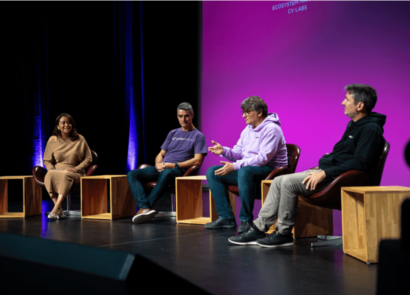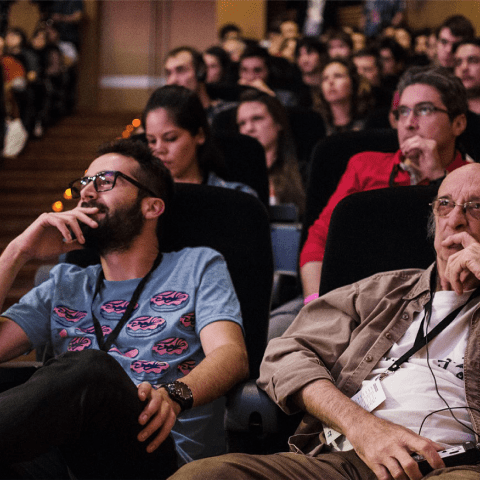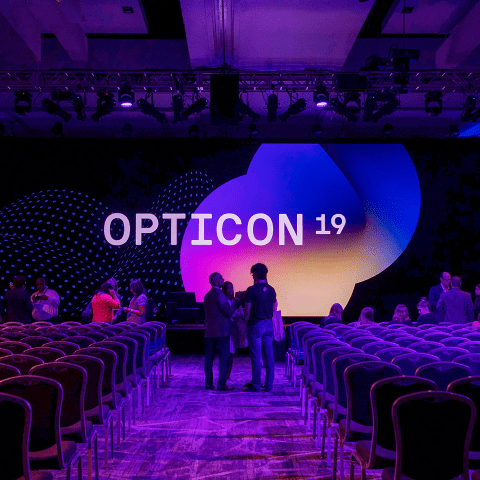_CTIAR-25_
CONFERENCE
_CTIAR-25_
CONFERENCE


Plagiarism & Use of ChatGPT or Similar LLMs Policy for CTIAR’2025
Papers that include text generated from a large-scale language model (LLM), such as ChatGPT, are prohibited unless the generated text is explicitly part of the paper’s experimental analysis. This policy, however, does not prohibit authors from using LLMs for editing or polishing text they have written themselves.
Summary of the Review and Submission Process
CTIAR’2025 features three technical tracks:
- Main Track
- AI for Social Impact
- AI Alignment
The review process is divided into two phases:
- Phase 1: Each paper receives two initial reviews. Papers that are not rejected proceed to Phase 2.
- Phase 2: Papers that pass the first phase receive additional reviews. Authors of these papers can submit a response after Phase 2, but only for papers that are not rejected in Phase 1.
Supplementary Materials: Authors may submit the following materials alongside their papers:
- Technical appendix
- Multimedia
- Code and data
The supplementary material deadline is three days after the paper submission deadline.
Additional Policies:
- Extra pages are allowed for references only.
- All authors are required to complete a reproducibility checklist to facilitate research replication.
- All authors are expected to be available for light review duty unless extenuating circumstances apply.
Fast Track: Note that the fast track option from previous years is not included this year. The submission deadline for CTIAR’2025 is after the initial reviews are released. Authors must withdraw their paper from if they wish to submit it to CTIAR’2025.
Purpose and Theme of CTIAR’2025
The purpose of the CTIAR conference series is to advance research in Artificial Intelligence (AI) and encourage scientific exchange among researchers, practitioners, scientists, students, and engineers across AI and its affiliated fields. CTIAR’2025 will be the CTIAR Conference on Cutting-Edge Research and Advancement in AI and Cybersecurity.
Timetable for Authors
Please refer to the timetable provided in the sidebar for important deadlines and submission dates.
Collaborative Bridge Theme
Over the years, CTIAR has incubated numerous AI sub-disciplines and conferences, fostering the cohesion of the AI research community. The Bridge Program for CTIAR’2025 seeks to promote interdisciplinary collaboration by encouraging engagement between different AI subfields and external disciplines. These bridges could connect various AI fields like planning and learning or unite AI with other fields such as the humanities. By cultivating these collaborative ties, CTIAR aims to tap into new sources of innovation and explore opportunities that arise from cross-disciplinary cooperation.
Virtual Presentation Policy for CTIAR’2025
CTIAR’2025 is committed to promoting in-person participation to foster deeper connections and collaborative engagement. However, recognizing that some authors may face exceptional circumstances that prevent physical attendance, the organizing committee is exploring limited virtual presentation options for select cases. Authors who anticipate being unable to attend in person must submit a formal request for virtual presentation, citing their reasons in detail. The committee will evaluate these requests on a case-by-case basis, prioritizing accessibility and fairness while ensuring the integrity of the conference experience.
For authors granted permission to present virtually, specific guidelines will be provided to ensure that the quality of the presentations is maintained. Virtual presentations will follow the same time allocations and formats as in-person sessions, and virtual participants must be available for live Q&A sessions via conference-provided platforms. Additionally, pre-recorded talks may be required as a backup to minimize technical issues during the live event. Despite the virtual mode, the expectation of professionalism and active engagement remains consistent with the in-person presentations.
While virtual options are being developed, CTIAR’2025 emphasizes that in-person presentations are strongly encouraged for optimal interaction with peers and active participation in workshops, tutorials, and networking sessions. The goal of the conference remains to build collaborative bridges within the AI community and across disciplines, and in-person attendance is considered the best way to fully engage in the dynamic environment of CTIAR’2025.
Specific Guidelines for Virtual Presenters at CTIAR’2025
1. Request for Virtual Presentation
2. Presentation Format and Timing
3. Technical Requirements and Participation
Review Criteria for CTIAR’ 2025
CTIAR is a highly selective conference. Prospective authors are strongly encouraged to submit only their most impactful and high-quality work. All submissions will undergo rigorous evaluation by expert reviewers to determine whether the contributions are substantial enough to merit publication at CTIAR.
Contributions may take various forms, including theoretical advancements, methodological innovations, algorithmic developments, empirical studies, integrative work that connects disparate AI subfields, or critical analyses that challenge fundamental assumptions or approaches in AI. Each paper will be evaluated and scored based on the significance and novelty of the contributions (e.g., research problems addressed, methods, experiments, or analyses), the theoretical and/or empirical soundness of the claims, the relevance to the CTIAR community, and the clarity of exposition.
Reviewers will also consider adherence to responsible research practices, including the ethical treatment of human subjects, the use of sensitive data, and attention to data and algorithmic bias. Efforts to ensure reproducibility, such as providing detailed proofs, documenting experiments, and sharing data and code, are highly encouraged. Papers that explore new research areas, introduce novel problems, or present methods of broader interest across multiple AI subfields will be prioritized over papers that offer only incremental advancements within a narrow AI sub-area.
Additional Information for Authors
For detailed instructions on submissions, please refer to the following sections:
For any inquiries related to conference registration, please contact president@canatechinstitute.ca.
Questions and Suggestions
For specific queries regarding the submission process or the technical program, authors may direct their inquiries to the appropriate committee chairs at president@canatechinstitute.ca.










